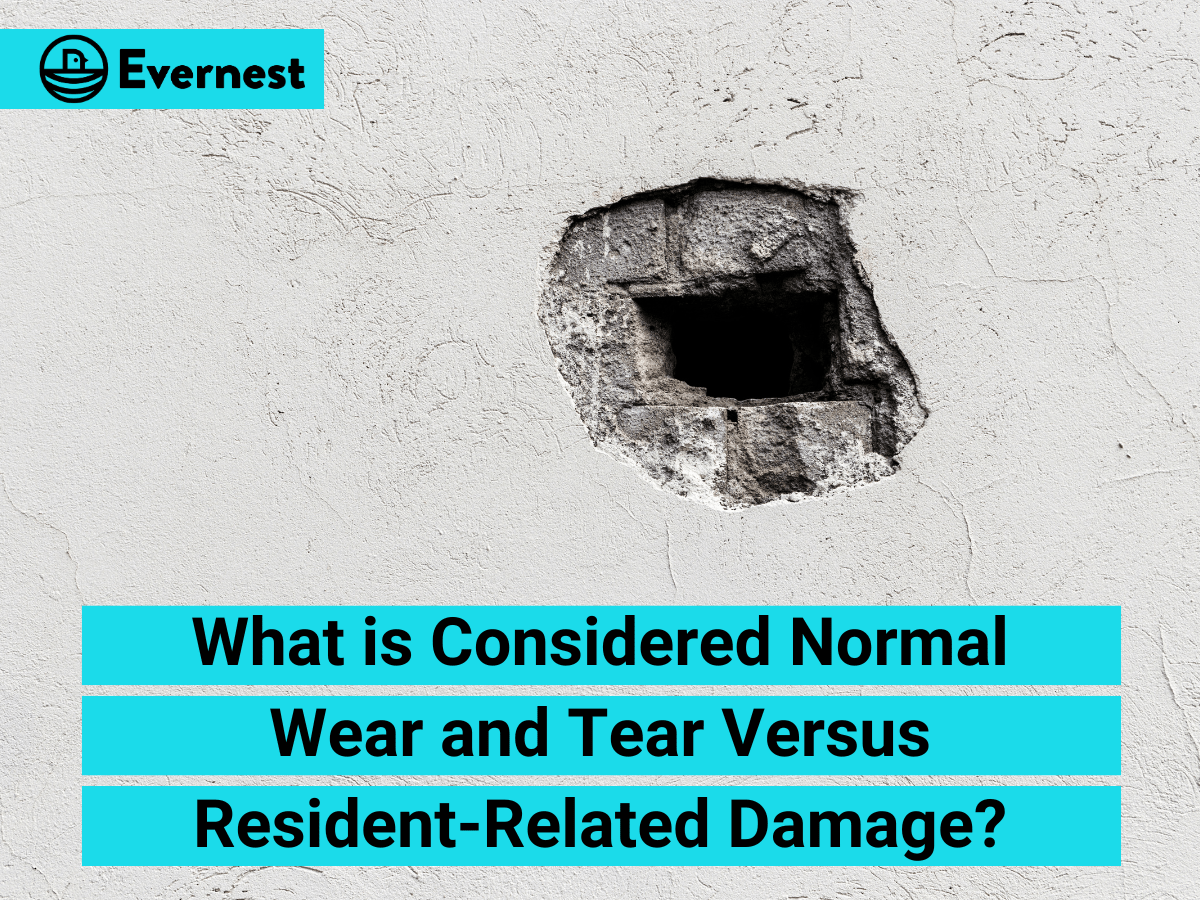As a landlord, managing a rental property comes with its fair share of challenges. Among them is the perpetual task of distinguishing between normal wear and tear and resident-related damage. Striking the right balance between maintaining a property’s integrity and addressing tenant concerns can be a delicate dance.
In this blog, we’ll explore the nuances of normal wear and tear versus outright damage, offering practical tips for effective property management.
Identifying Normal Wear and Tear
Normal wear and tear are inevitable in any rental property. Everyday use and natural forces like weather cause gradual deterioration of the interior and exterior of any property. Think of it as a patina that develops over time, reflecting a property’s history.
Examples of normal wear and tear include faded paint, worn carpeting, and minor scuffs on walls.
Identifying Resident-Related Damage

On the other hand, resident-related damage goes beyond the realm of normal wear and tear. It refers to any harm done to the property due to negligence, misuse, or intentional actions by the resident.
From holes in walls to broken appliances and excessive stains on carpets, resident-related damage requires prompt attention and resolution. These issues not only detract from the property’s aesthetic appeal but also pose financial burdens on landlords. Measures such as thorough move-out inspections and security deposits as well as clear language in your rental lease regarding tenant responsibilities are crucial and go a long way in protecting you as a landlord.
Landlord vs. Resident Responsibility
When it comes to the end of a lease term and your residents move out, the first and most important step is to conduct a thorough walkthrough of the entire property. During this walkthrough, your goal is to take stock of the exterior and interior state of the property to understand what normal wear and tear is present and what goes beyond this to actual damage. Remember to take plenty of pictures to document what you find (this can also serve as proof should a previous resident refute damages you claim they caused)!
In general, residents are not responsible for measures taken to fix normal wear and tear in a rental property. However, any damages that go beyond normal wear and tear are typically up to the resident to pay for out of their security deposit.
This can include:
- Excessive cleaning: Residents are usually responsible for cleaning the rental property and leaving it in good condition upon move-out. However, if the property requires deep cleaning to restore it to its original condition, residents could be charged for these cleaning services.
- Repairing damages: Any damages caused by residents that go beyond normal levels (such as holes in the walls or broken fixtures or appliances), will be their responsibility.
- Reversing alterations: If residents make alterations to the property and do not return it to its original state upon move-out, they will be charged to remedy them. This could include painting over custom paint colors, removing wallpaper, or removing fixtures.
- Replacing lost or broken items: Residents are responsible for replacing or repairing anything in the property that was present and in working condition when they moved in. This usually includes burnt-out lightbulbs, lost keys, broken window blinds, or damaged furniture.
Standard wear and tear in a rental property include what you might think: worn carpets, minor scuffs and marks, faded paint or wallpaper, loose handles, old but functioning appliances, and weather-related damage. Landlords are responsible for maintaining the property in habitable condition and are therefore responsible for remedying these things when turning over their rental property for a new set of residents. Anything beyond this falls to the previous resident and is paid for out of their security deposit.
Tips for Effective Property Management
Whether you are managing your rental property yourself or enlisting the help of a professional property management company, there are tried and true ways to ensure a positive rental experience for your residents and the long-term health of your property.
1. Thorough Inspections: Conduct comprehensive move-in and move-out inspections, documenting the property’s condition with photographs and written descriptions. Provide new residents with an assessment checklist upon move-in so they can document the state of the property and use this to compare against your move-out inspection at the end of the lease term.
2. Clear Communication: Set clear expectations regarding property care and maintenance from the outset of a resident’s tenancy. Provide residents with guidelines on what constitutes normal wear and tear versus damage and be sure to clearly state what they are responsible for maintaining during their lease and what you or your property management company are responsible for.
3. Reserve Funds: It’s always a good idea to set aside money in a contingency fund to cover potential repairs. While a resident’s security deposit is there to pay for repairs and maintenance as well, large or unexpected issues can arise and catch you by surprise so it’s best to make sure you have a backup plan.
4. Professional Guidance: When in doubt, seek advice from legal professionals or property management experts. They can offer valuable insights and assistance in navigating complex rental situations.
Resolving Disputes
Resolving disputes between residents and landlords over damages to a rental property requires clear communication, documentation, and a willingness to find a fair solution for both parties. As you now know, we strongly recommend that you thoroughly document the condition of the property at both move-in and move-out, including detailed written descriptions and pictures. This documentation serves as evidence to support claims regarding any damages.
If a dispute arises, it’s important to engage in open and respectful communication to understand each other’s perspectives and concerns. Mediation can often be a helpful tool in resolving disagreements, allowing an impartial third party to facilitate discussions and find a mutually acceptable resolution. In cases where mediation is unsuccessful, legal recourse may be necessary, and both parties should be prepared to adhere to the terms outlined in the lease agreement and applicable laws and regulations. Ultimately, the goal is to find a resolution that upholds the rights and responsibilities of both the resident and the landlord.
Final Thoughts: Normal Wear and Tear Versus Resident-Related Damage
Successfully navigating the turnover of your rental property means understanding the difference between everyday wear and tear and resident-related damage. With a proactive approach to property management and clear communication with your residents, you can ensure the health of your property and the well-being of its occupants, which is the ultimate goal, right?
If you’re looking for a team of property management professionals to lighten the load of being a landlord, consider Evernest! We have helped countless landlords just like you manage their properties and build long-lasting, positive relationships with their residents through our tried and true management methods.
Find the Evernest team in your area and get started today! >>


